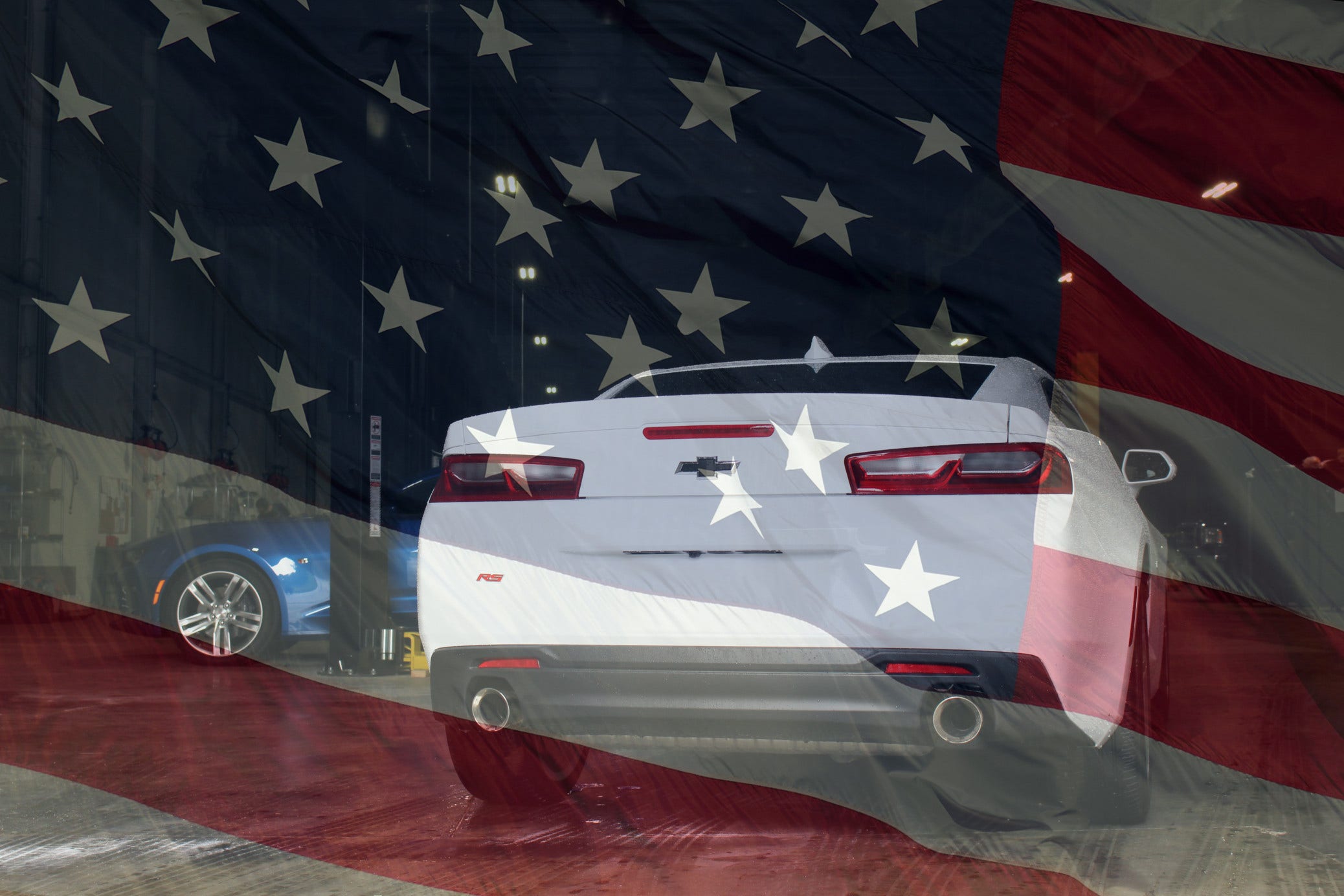
God Only Knows (how much oil's in your intake) - Catch Can R&D, Part 1: Stock Review
There's nothing quite like plopping oneself into the car to leave work on a summer evening, beach-bound and brimming, windows down, to the tune of the sunset vibes that arrive hand-in-hand with the heavy midsummer air of July. Our Mishimoto R&D facility is located in New Castle, DE, and around here, people tend to favor numerous seaside towns in Southern New Jersey or in Delaware.
A true slice of Americana, an evening stroll down the main drag of a typical east coast beach town is sure to leave anyone with a faint smile, humming "Surfin USA" and craving more frozen custard, or maybe another gin and tonic. The competing smells of crisp, briny sea air and sweet, fried funnel cake assuage the senses, while the voices of The Beach Boys emanate lazily and intermittently from the windows of passing cars. That's right west coasters, we have beaches here too, and we also have surfer girls, boardwalks, waves to catch, and even the occasional deuce coupe or fuel-injected stingray.
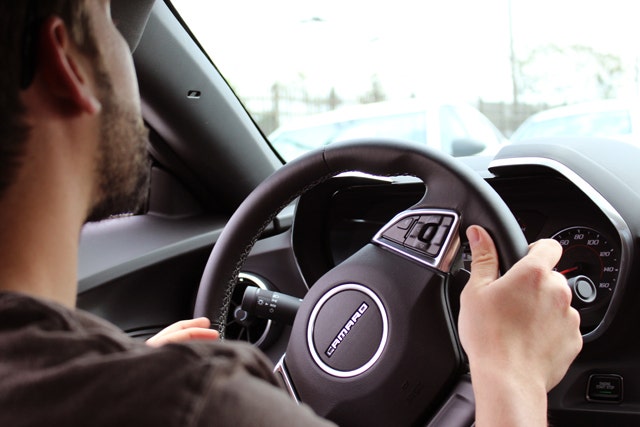
Steve behind the wheel, probably headed to the beach.
However, as has always been the case, this summertime euphoria is fleeting and brief, appearing on Friday and extinguished by Sunday. It's hard to complain, though - working at Mishimoto is never dull, and we have numerous exciting projects to fill our weekday nine-to-fives with activity. Our latest and greatest endeavor is no exception - we are working on a direct-fit 2016 Camaro Catch can, this time for the 2.0T!
There weren't any Catch Cans in Beach Boys songs"
The Beach Boys never sang about catch cans, and you may be wondering why you would need one. There are many answers to that question, but let's start with fuel delivery.

Direct Injection
Brian Wilson's fuel-injected Stingray is a rare breed regardless of where you are, and it was well ahead of its time. The top-shelf engine option in the C2 Corvette had fuel injection, but the technology's ubiquity has nullified the glamour of that term today. One of the newer forms of fuel delivery is a specific type of fuel injection called direct injection, wherein fuel is administered directly into the cylinder rather than into the intake port. The 2016 Chevrolet Camaro 2.0T uses this type of fuel delivery in its new LTG engine in order to improve efficiency, making our white Camaro appear quite green to the EPA. However, Direct Injection has the unintended side effect of gunking up the intake tracts in our engine, which is where our Camaro catch can will help improve the situation.
You see, injecting fuel into the ports may have been less efficient, but it was very helpful in that it worked as an excellent cleaner for the ports and valves, removing any residue and keeping that metal shiny. So back in the Beach Boys' heyday, engines were better at cleaning their own intake ports, but they also were much better at not making them dirty in the first place because they lacked CCV systems and therefore the induction system lacked the dreaded "blow-by" - that stuff belongs in a Camaro 2.0T Catch can, not your intake! (more on this later.)
Crankcase Ventilation
In an engine that uses pistons to drive a crankshaft, it is rare (and usually undesirable) for the piston to make a perfect seal with the cylinder wall. As such, fuel vapors and other combustion byproducts often make their way past the piston seals and into the crankcase. This creates a positive-pressure condition within, and that pressure needs to be purged somehow (otherwise, a gasket might volunteer to take one for the team). This is something that Steve, our engineer, is focusing on during the R&D for our Camaro catch can, so he is going to run some tests to learn more about the system.
2016 Camaro 2.0T CCV System
The CCV system is complex in the 2016 Camaro 2.0T. Let's take a look at the testing we're doing to see how it works, and how we will implement our 2.0T Camaro Catch Can.
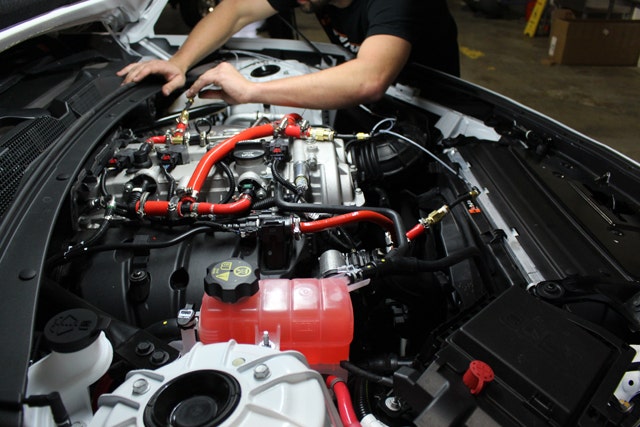
Setting up the lines to determine how the stock CCV system works.
Peering under the hood, it is very clear that this CCV system is more unique than most. As such, we will need to perform some testing to determine exactly how the lines are routed, when pressure is purged, and out of which valves. Steve, our engineer, has replaced the stock lines with some spare hose in order to plug some pressure gauges into T-joints in-line with the hoses - this should help us determine which location is optimal for our Camaro catch can.
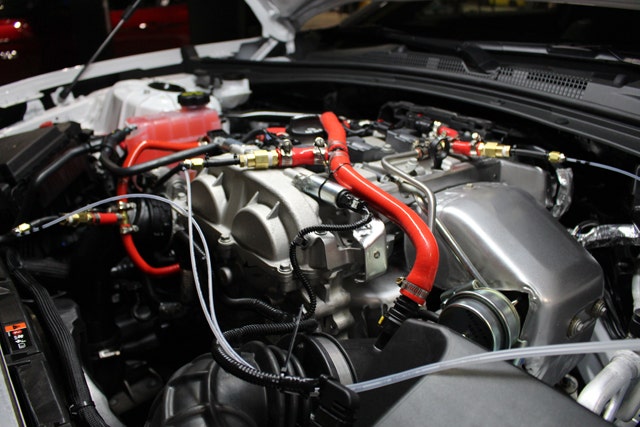
The plastic vacuum lines route to the cabin, where the gauges are mounted on the dash.
This setup will allow us to monitor pressure and vacuum from the cabin, which will help us figure out which lines are pressurized under various driving conditions.
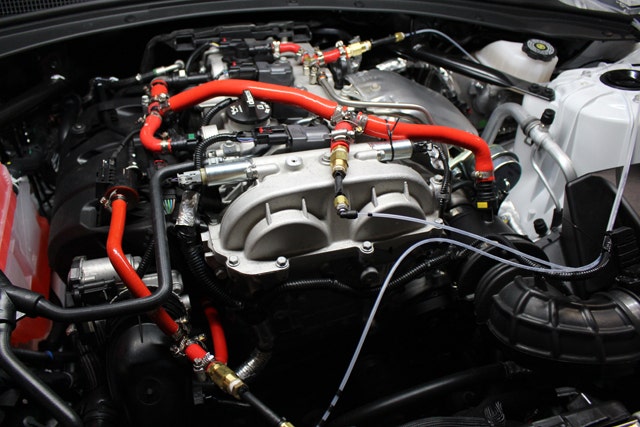
At first glance, there appear to be three valves in the system. Our pressure sensors should give us a good idea of how each system is responding to various engine loads and driving conditions.
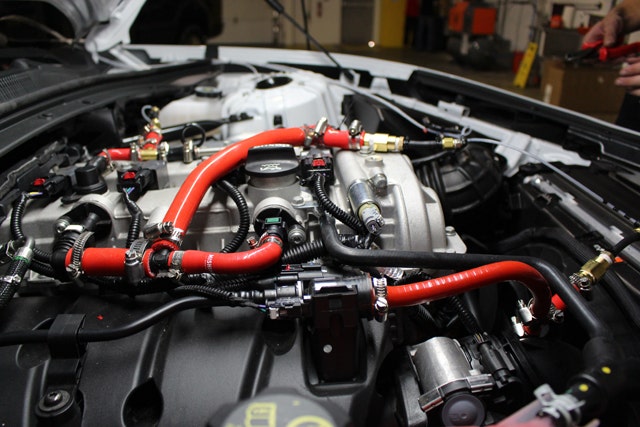
On the passenger side of the engine, you can see the three aforementioned valves: two on the valve cover and one line routing along the top of the manifold to the third one, also on the valve cover.
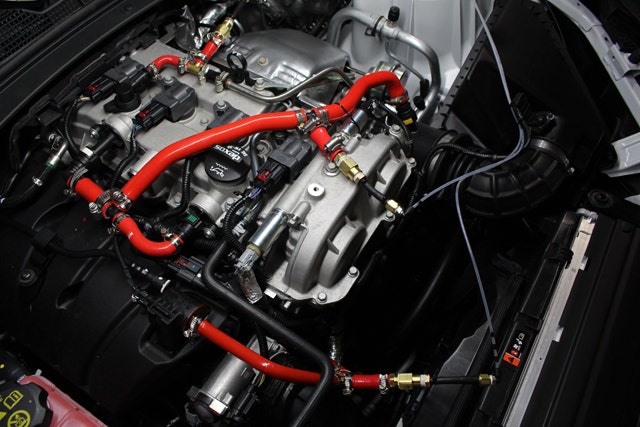
Pictured below on the driver's side of the engine, you can see that the system is routed directly into the inlet side of the turbo, which is unconventional compared to most systems that route to the intake tubing.
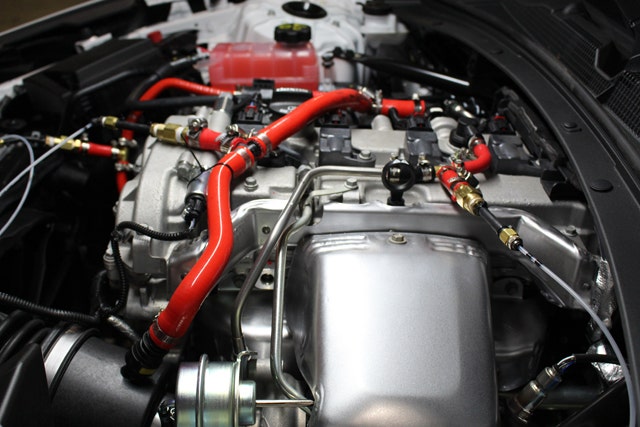
Here is Steve, setting up the gauges to monitor vacuum and pressure within the car.
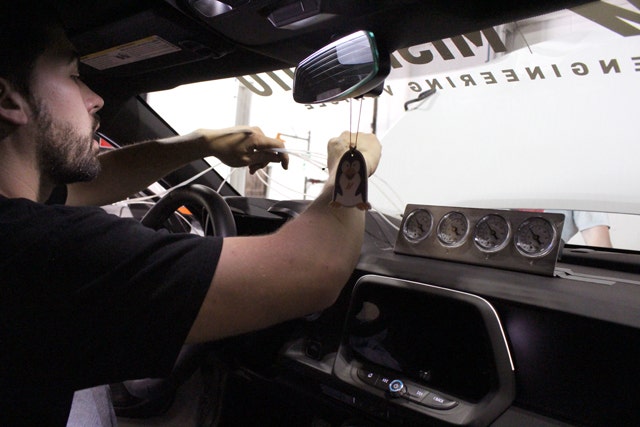
The gauge setup inside.
Blow-By
In the Beach Boys' rides, blow-by (air from the crankcase containing fuel, oil, and other vapors) was dropped onto the street; that definitely would not fly today. Instead, modern engines route these vapors to the intake tract and back through the engine in hopes that they will more thoroughly burn the second time around. However, especially without fuel to help dissolve buildup, much of the oil vapor condenses and ends up sticking around (literally) in your intake ports. This has dire consequences for your engine in the long term. Learn all about how blow-by can be bad for your engine over in our technical article. That's where we come in with our 2016 Camaro Catch Can.
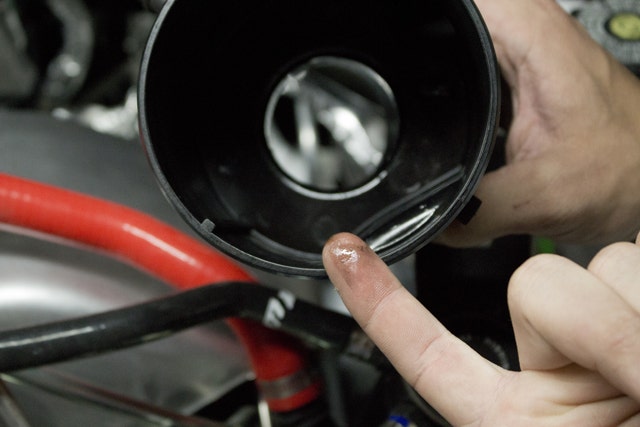
Oil doesn't belong in the intake! I think we need a Camaro Catch Can, stat.
When we took off the intake, this is what we found inside our brand new Camaro's tubing!
Catch Cans
A catch can sits in-line as part of the CCV system and is designed to condense these blow-by vapors, trapping the oil and fuel residue in the can, while allowing the air to continue to the intake tract, free of nasty pollutants. Then, the responsible owner (you) can periodically empty the Camaro catch can in an environmentally friendly manner - best of both worlds!
Coming Soon"
Fourth of July!!!
And not long after that, an update on the results of our testing. Now that we have figured out how to test the CCV system on the 2016 Camaro 2.0T, we will begin experimenting with different ways to collect that blow-by! We'll have more info on testing coming up, so stay tuned for the next step in developing our Camaro 2.0T Catch Can!




